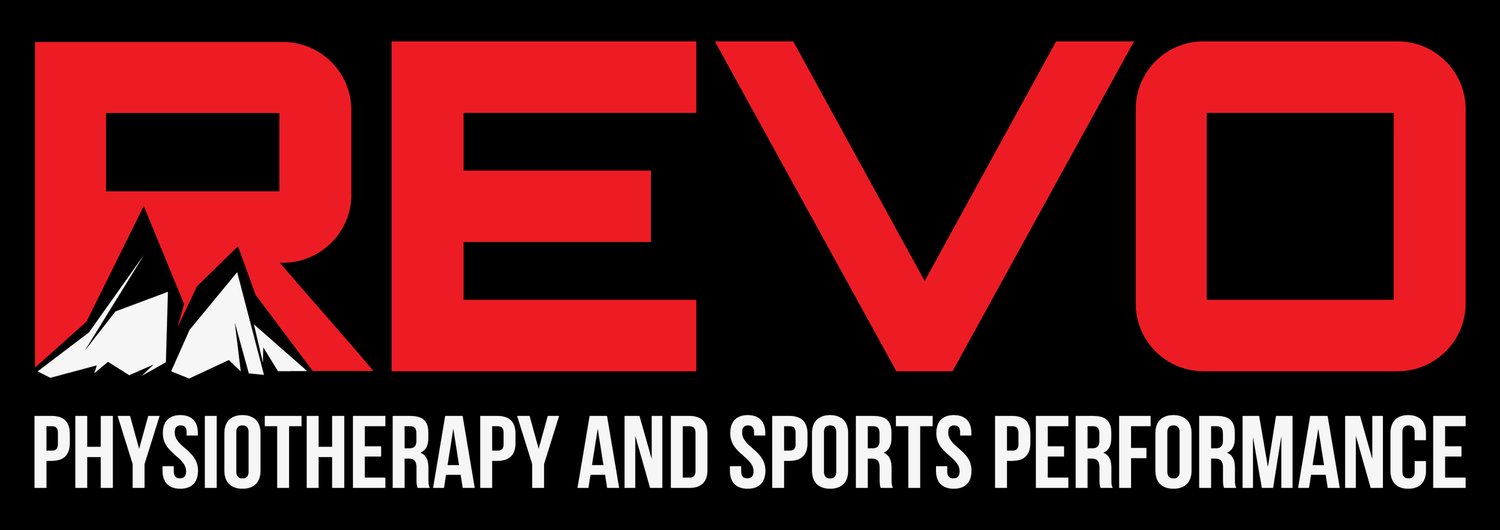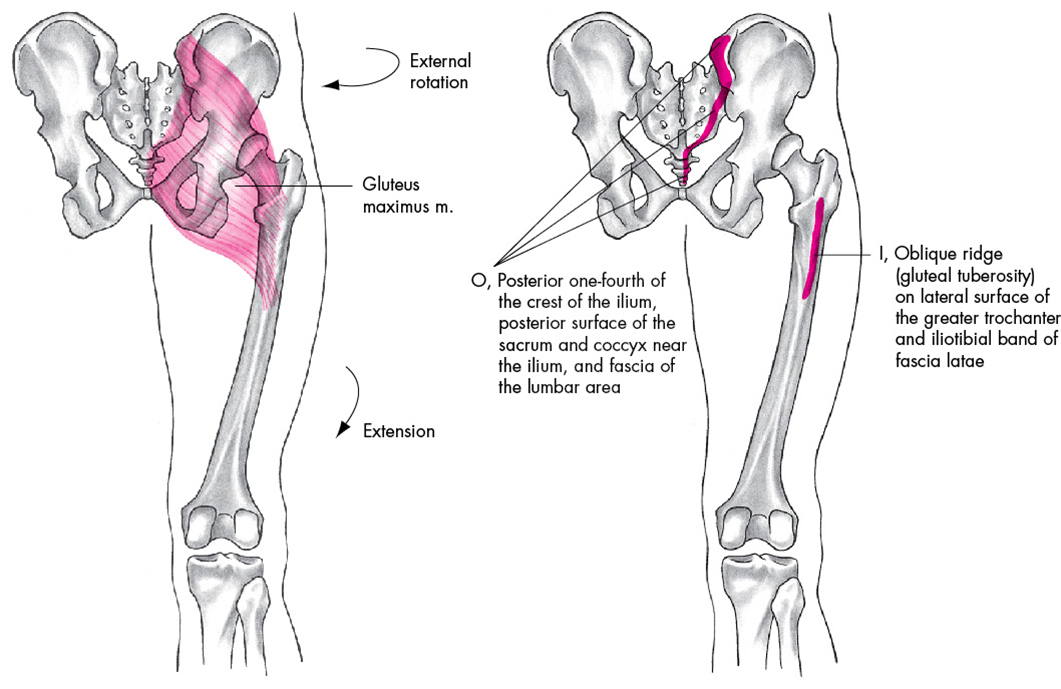Movement retraining. Train the brain
Movement retraining is a hot topic in physical therapy and performance literature. Everyone is talking about training to stop the valgus knee (medial collpase) or increased lumbar spine extension (arching the low back).
Strength work alone is not enough to correct these movement faults. A lot of folks hear their glute is weak because they exhibit a valgus knee in running or cycling. Weakness in the glute max can allow this to happen but there is more here than meets the eye.
studyblue.com
In the case of knee valgus, the femur internally rotates as the knee collapses medially. The muscle responsible for controlling this position is the glute max. The engine of the lower extremity! As you see above, the glute max attaches proximally at the sacrum and the ilium and travels laterally to attach onto the femur and the IT band. As this muscle contracts is creates femoral external rotation, hip abduction and hip extension. Long story short it rotates the leg so the knee remains stacked over the foot versus collapsing medially.
So lets assume you're an athlete and you are training your glutes so we don't suspect weakness as the cause of your knee position problems. What is really happening here?
We find that the problem is motor control. Think of motor control as a habit. If you're a basketball player, shooting free throws is an automatic movement. You don't think much about it after 10,000 shots. The same is true for the way we squat, jump, land, run. You are hard wired to perform a certain way. If we develop poor habits in these movements we can get into some trouble.
Classic quad dominance. Vertical trunk. Significant anterior knee translation. Huge stress at the knee and ankle while the hip remains relaxed.
The pattern shown above is referred to as quad dominance. As the knee travels further forward the quad is activated while the hip (glute max) remains relaxed. Try it right now, squat with your knees forward and feel your quads. If this is your default movement you are going to tend to load quad much more than the glute. If the glute isnt doing its fair share, knee valgus is likely.
Now, the brain. The control center. We need to think about the primary motor cortex here. You may have seen a picture of the homunculus before. Let me shed some light on this structure. This is a visual estimate of the representational area of each body region. The larger the representational area, the more motor control you have. Notice the size of the face and hands, huge area. Lots of precision and movements here. Hip/glute, not so much. Shit.
Big deal, just squat with your knees above your feet and you'll be fine. Not quite. There is one sticking point here. If glute max is not active in the first place how do you get it working during your sport? Moving from activation, think clam shells or fire hydrants, to changing your motor pattern during skiing is a whole different story. This is where we need to train more than your muscles. Need to train the brain!
Training various movements, various variables and scenarios is key. Focused practice is not easy. Taking a back to basics approach is critical. Mastering the fundamentals is a prerequisite before advanced movements. Nail down the double leg squat with a perfect hip hinge. Transition to single leg work. The more advanced the movement the more you need a physical therapist, athletic trainer, coach, etc watching you. Feedback on your performance enhances your motor learning so don't go this alone. The focus of the feedback has been shown to make a great difference in the speed of motor learning. An external focus of attention has been shown to be superior in instances of motor control training. For example in basketball, an internal focus would be concentrating on the movement of your wrist as you shoot, an external focus would be focusing on the back of the hoop as your target while shooting.
Train your brain by using an external focus of attention while retraining your movements and experience new levels of efficiency.
Check out our favorite activation series below. Start with 30 second static holds followed by 30 reps for hydrants and skates. We learn motor patterns faster when we start with a static hold. Follow that up with a monster walk series until you feel a good burn and 30 reps of perfect squats. As always, movement quality over quantity.



